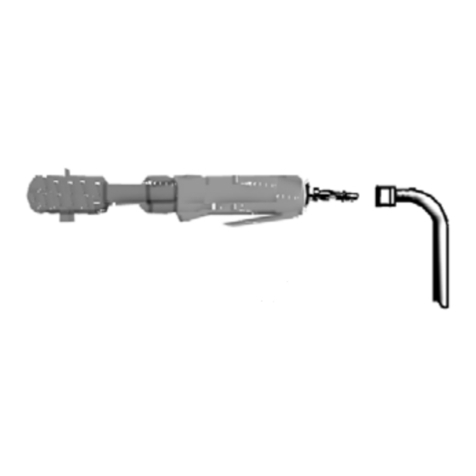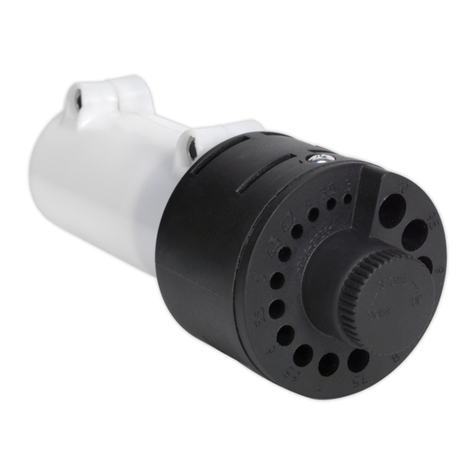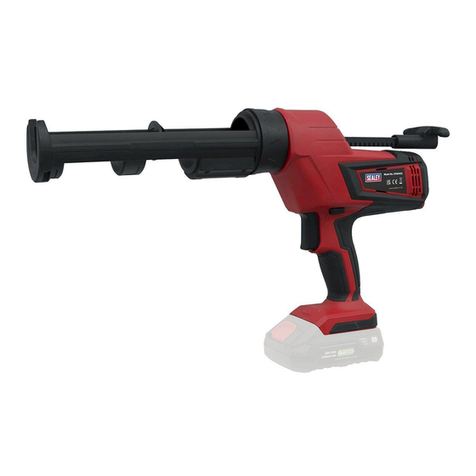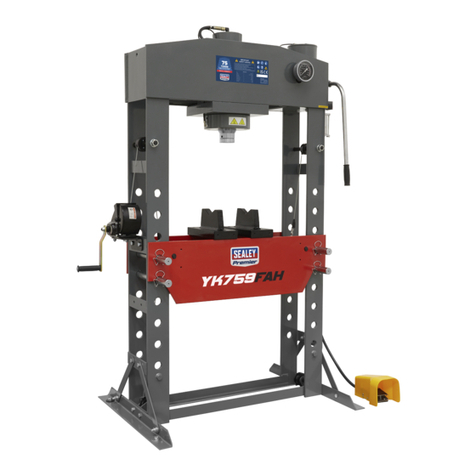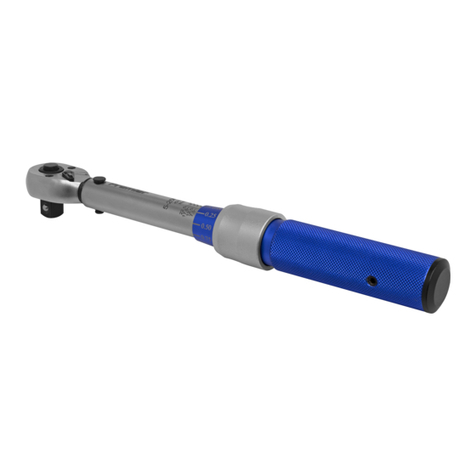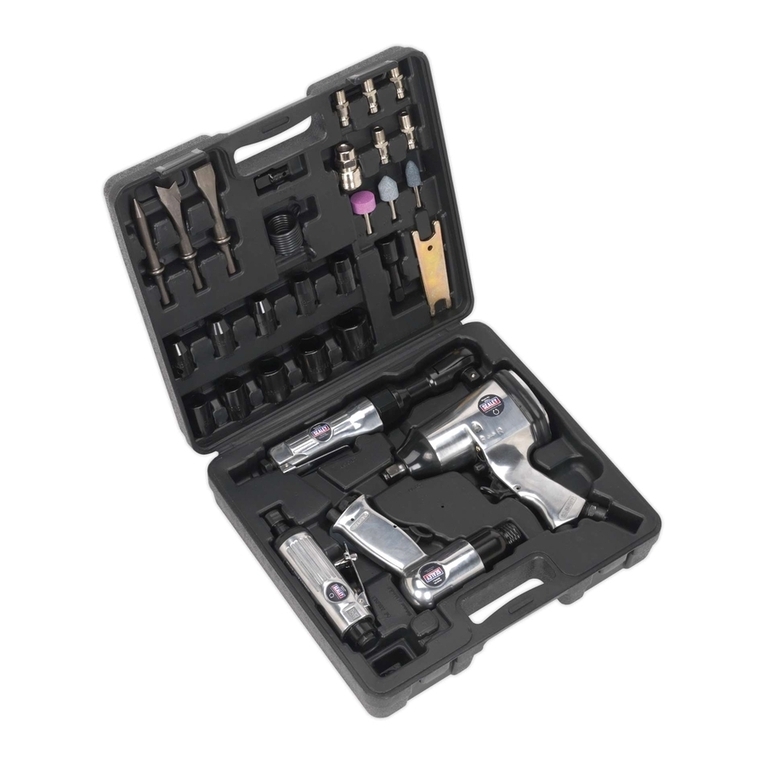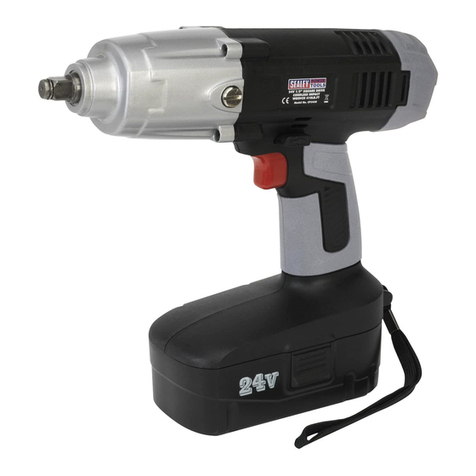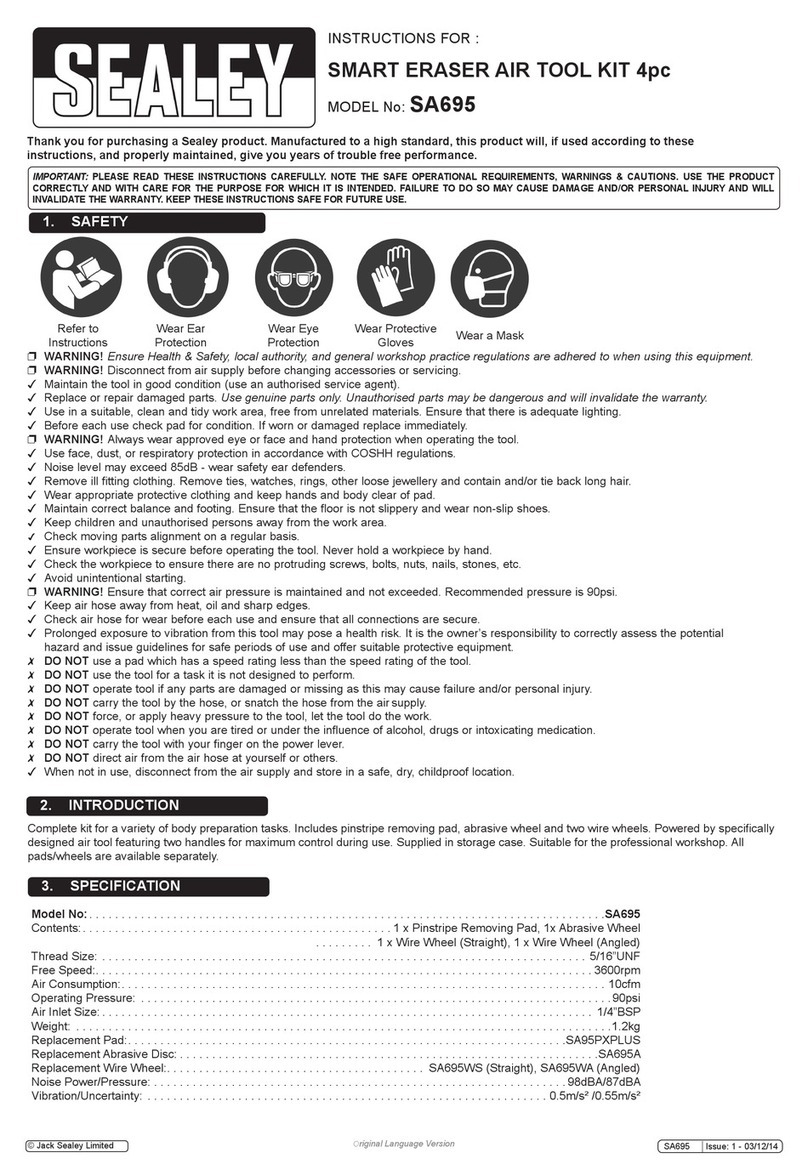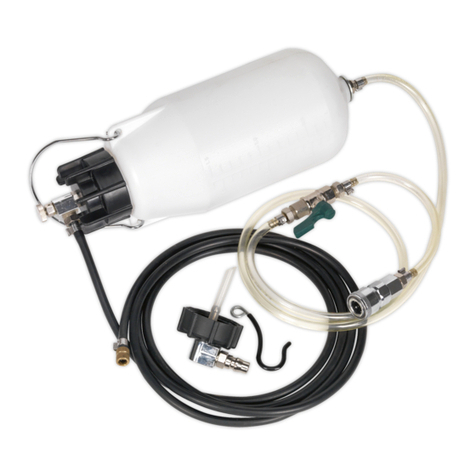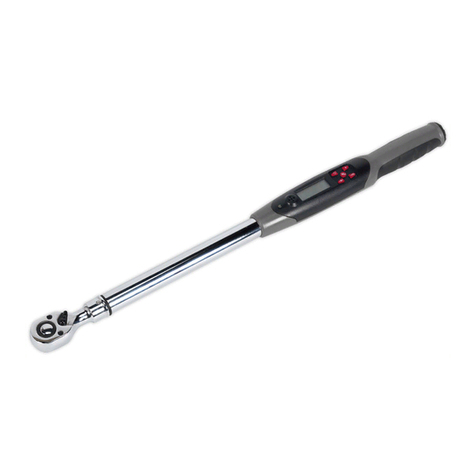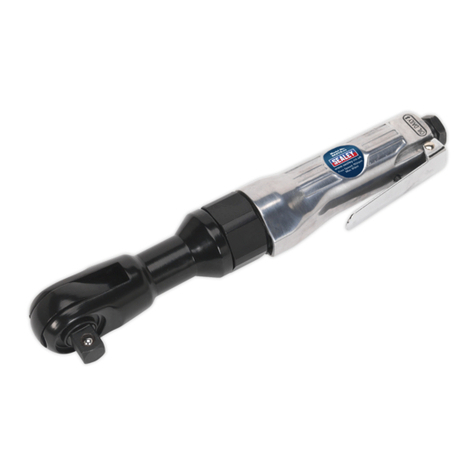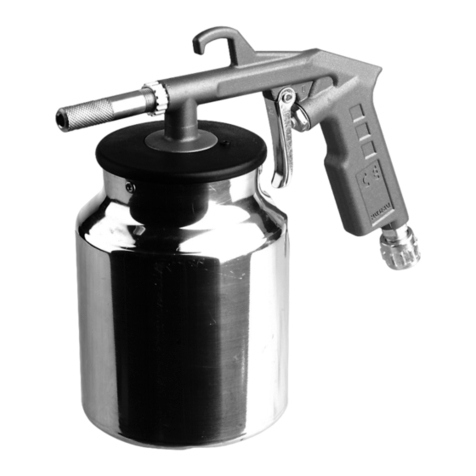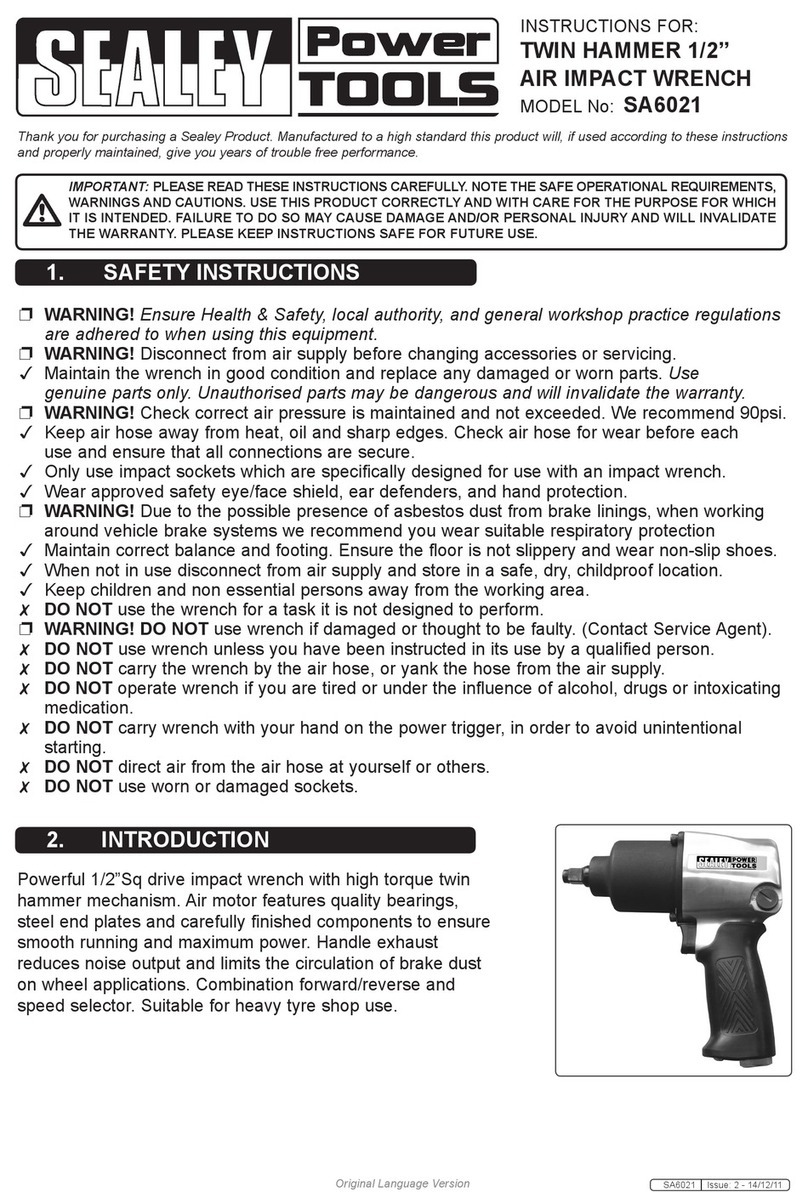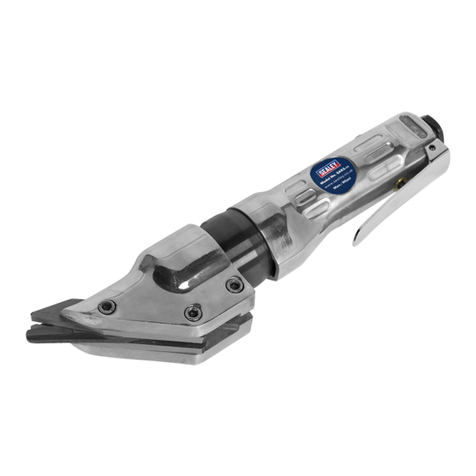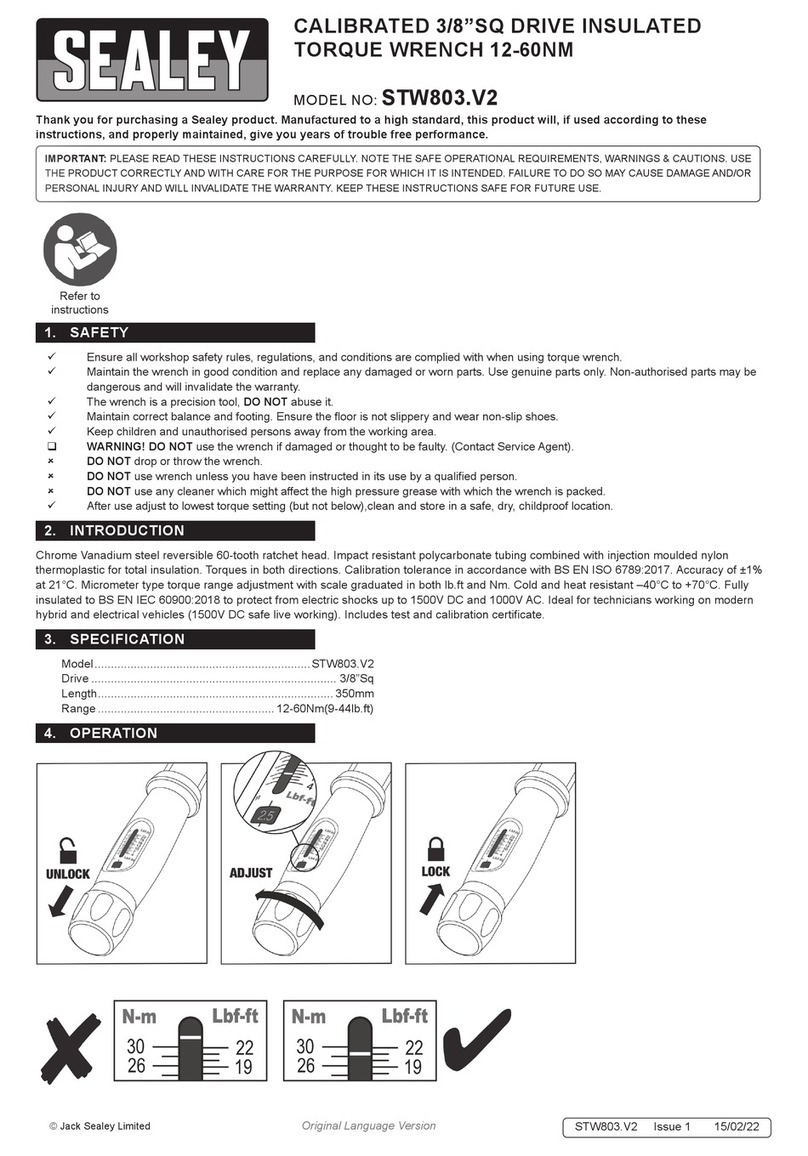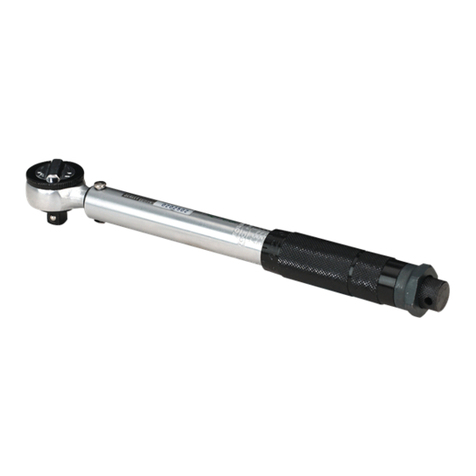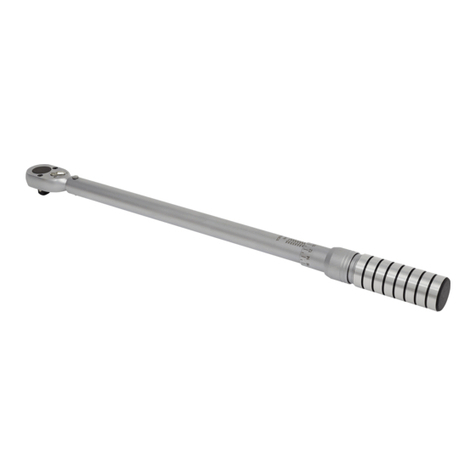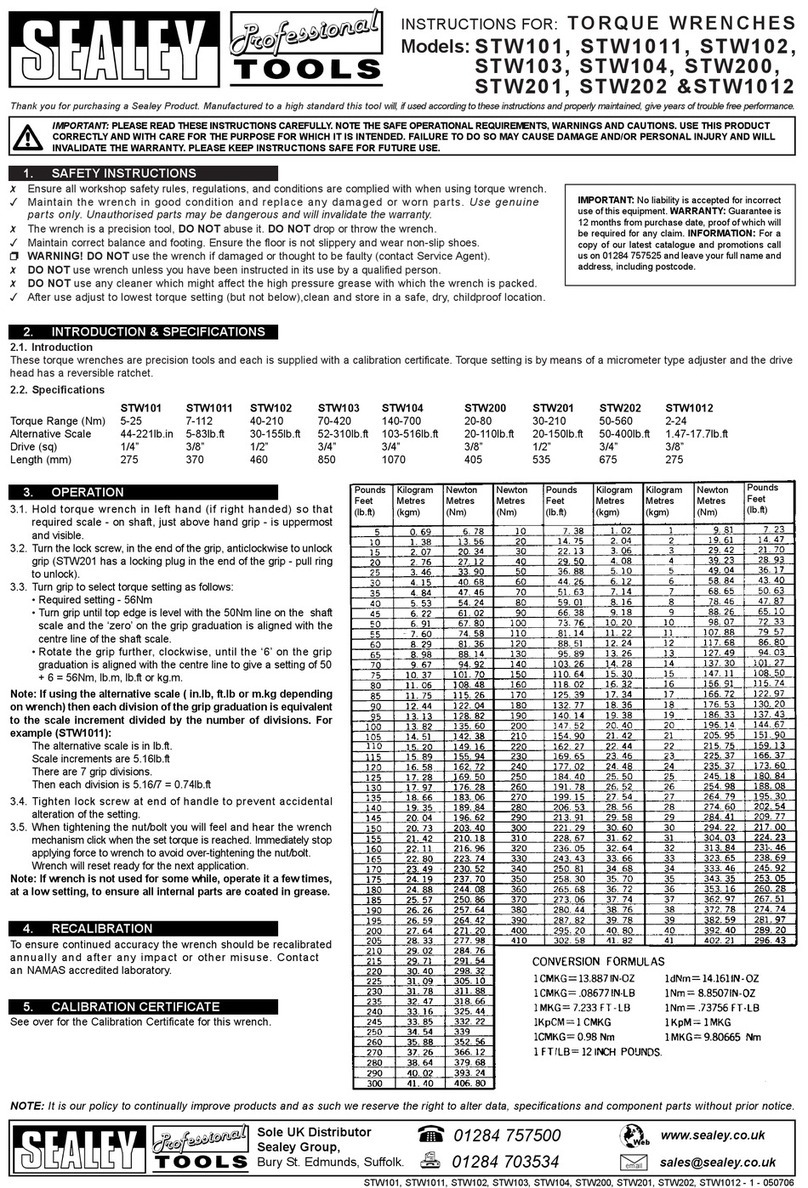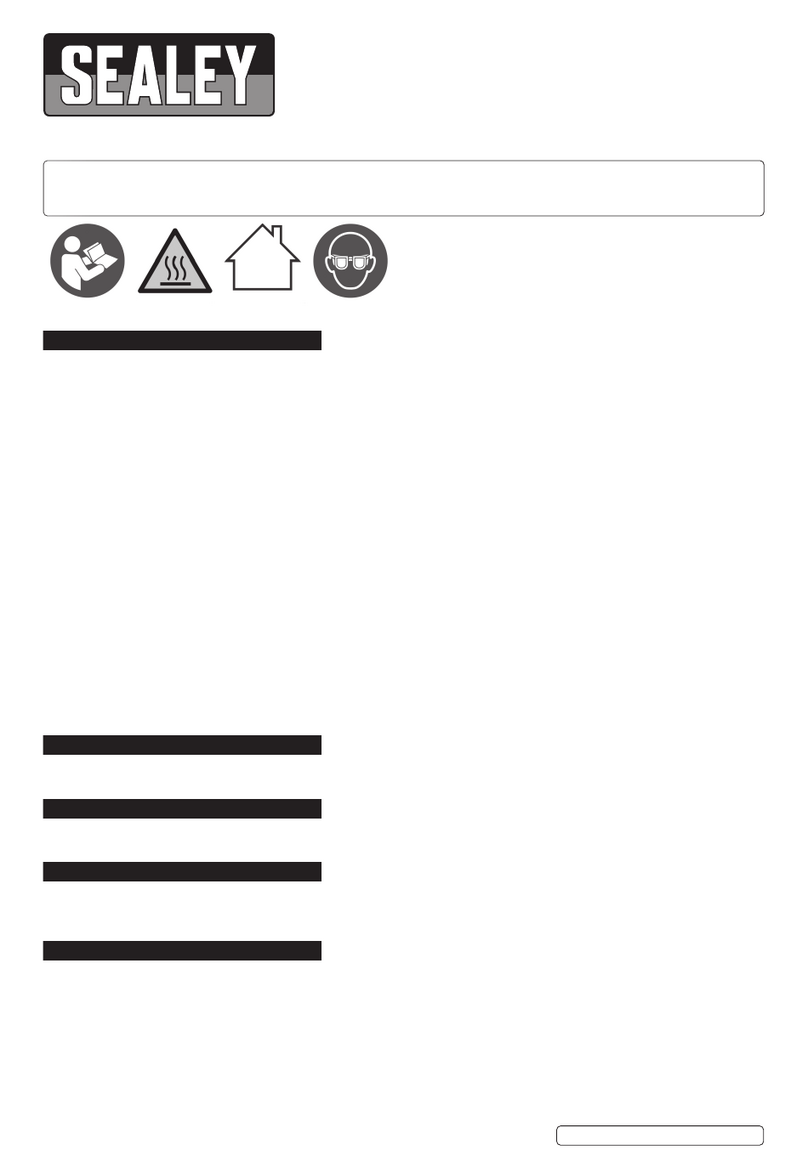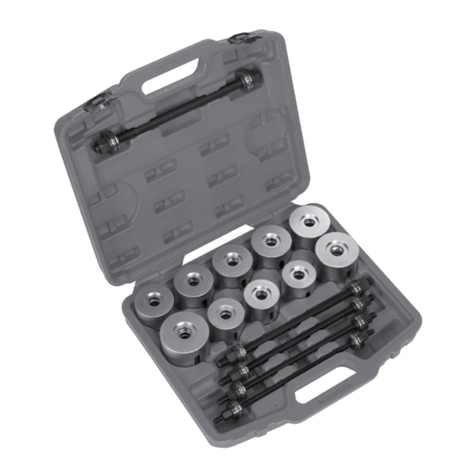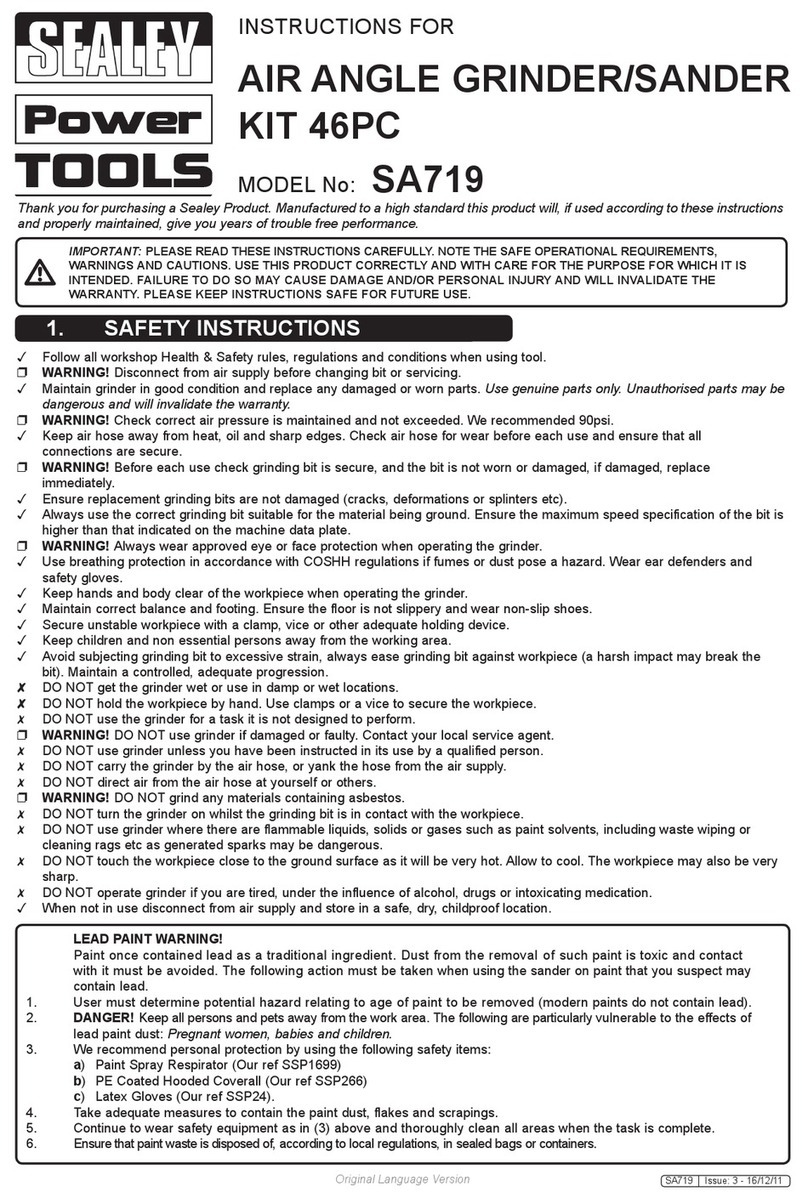
KEEP AIR BRUSH
PARALLEL TO SURFACE
SURFACE
START
HERE
PRESS
TRIGGER
HERE
RELEASE
TRIGGER
HERE
FOLLOW
THROUGH
KEEP MOTION
STEADY
5. CLEANING & MAINTENANCE
6. TROUBLESHOOTING
01284 757500
01284 703534 sales@sealey.co.uk
Sole UK Distributor
Sealey Group,
Bury St. Edmunds, Suffolk.
www.sealey.co.uk
NOTE: It is our policy to continually improve products and as such we reserve the right to alter data, specifications
and component parts without prior notice.
IMPORTANT: No liability is accepted for incorrect use of this product.
WARRANTY: Guarantee is 12 months from purchase date, proof of which will be required for any claim.
INFORMATION: For a copy of our catalogue and latest promotions call us on 01284 757525 and leave your full
name, address and postcode.
4. OPERATING INSTRUCTIONS
WARNING! ENSURE ADEQUATE VENTILATION. DO NOT SPRAY NEAR NAKED FLAMES.
4.1. Mask the area which is NOT to be painted.
4.2. Ensure the object to be painted is free from dust, grease and the surface has been prepared.
4.3. After mixing and thinning the paint, as instructed by the paint manufacturer, fill the paint cup (Fig.1.1) just
over half full.
Note: Mix thoroughly, making sure that the paint is free from lumps. It may be necessary to strain the paint
first.
4.4. Turn the air ON and test your spray on a test panel to get the “feel” of your air brush. Holding the air brush
about 6 inches from the surface press the trigger (Fig.1.2) down and gradually draw back moving the air
brush at a steady rate, parallel to the surface, (Fig.2). For the best result start the motion before
pressing the trigger and a follow through motion after releasing the trigger, (Fig.3).
4.5. Make any necessary spray adjustments. The paint spray pattern can be adjusted by turning the air
adjusting screw (Fig.1.3). The air adjusting screw is fully closed when it has been turned clockwise to the
stop point. The volume of paint dispensed can be adjusted by varying the backward movement of the
trigger (Fig.1.2) and can be pre-set using the micro adjust screw (Fig.1.4).
4.6. Apply paint in accordance with the paint manufacturers guidelines. Continue with this method until the
desired coverage is reached. DO NOT spray too heavily.
Note: When using quick drying paints, it is advisable to clean or immerse the fluid end of the air brush in a
compatible solvent between sprays.
Fig.1
2
1
3
4
Fig.2 Fig.3
The air brush should be thoroughly cleaned immediately after each operation.
5.1. Empty the paint cup and flush with a suitable solvent.
5.1.1. Fill the paint cup half full of a compatible solvent.
5.1.2. Spray the solvent into a suitable container, this will clean the needle and nozzle assembly. Hold a soft
cloth over the needle cap and spray again, this will force air and the compatible solvent back through the
air brush and clean the internal moving parts.
5.2. Should the air brush become clogged with paint, dismantle the air brush and clean the
component parts as follows: (Note: Numbers in brackets refer to item numbers on the parts diagram).
5.2.1. Turn off the air and disconnect the air hose from the air brush.
WARNING! The fluid needle has a long sharp point and great care should be exercised when handling it.
5.2.2. Unscrew the adjusting screw (24) and the needle locking nut (19) within the adjusting handle, unscrew
the adjusting handle (21) and carefully slide off the needle.
5.2.3. Remove the needle locking guide (15) and spring (16) and carefully withdraw the fluid needle (20) and
place it somewhere safe to avoid bending it or damaging the sharp point.
5.2.4. Unscrew the needle cap (1) from the nozzle cap (2).
5.2.5. Loosen the nozzle assembly (3) with the spanner provided and unscrew it. If the nozzle needs to be
soaked in solvent remove the O-ring (4) as it may be damaged by the solvent.
5.2.6. Unscrew the air cap body (5) and remove O-ring (6).
5.2.7. The trigger (9) and lever guide (11) will be loose once the needle has been removed, take care to
note the correct position for the lever guide as the air brush will not operate properly if this guide is not
the correct way round.
5.2.8. To remove the needle guide (13), remove screw (39) and undo the stopper (14), the needle guide can
then be removed.
5.2.9. Any components with dried paint on them should be cleaned with a solvent suitable for the paint last
used and may need to be soaked for a while before the paint will come off. Take great care not to bend
the needle when cleaning it and avoid the sharp point.
5.2.10. The air inlet valve (25 to 34) and the fluid adjusting valve (35 to 38) assemblies can be removed and
cleaned without having to dismantle the main air brush, refer to parts diagram for order of assembly
5.3. Reassemble the cleaned air brush in the reverse order.
Check the condition of any O-rings and replace if damaged.
Take care refitting the fluid needle, DO NOT force or overtighten as this may damage the seat or the
needle.
AB933 Issue No: 1 - 02/04/08
AB933 Issue No: 1 - 02/04/08
THE PROBLEM THE CAUSE THE SOLUTION
Paint Runs. Too much paint applied.
Moving air brush too slowly along workpiece.
Press trigger lightly.
Move at a faster speed.
Grainy Spray. Paint too thick.
Dried paint deposits on tip, needle or regulator.
Thin paint.
Clean air brush,as described above.
Paint Splattering. Needle snapping back into tip. Release needle gently.
Curved Stroke. Air brush not being kept parallel to work. Keep air brush parallel to the work,
unless curved stroke is desired.
Paint Spitting. Needle snapping back into tip.
Paint too thick.
Release needle gently.
Thin paint.
Restricted Spray. Air adjusting valve screwed in too tight.
Paint tube in pot clogged.
Loosen the air adjusting valve
to obtain the correct spray.
Clean as described above.
Bubbles in Paint Cup. Air adjusting valve out too far.
Paint tube in pot clogged.
Adjust air valve to eliminate bubbles.
Clean as described above.
Erratic Spray. Fluid needle bent or paint deposits on needle. Replace needle or clean as required.
email
Web
